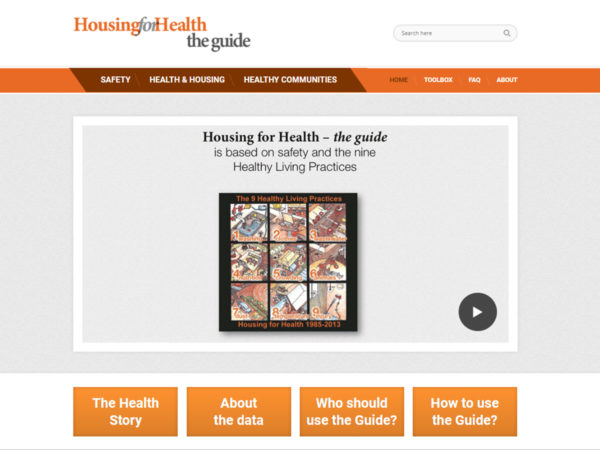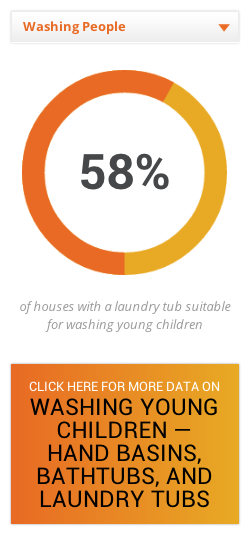About Housing for Health – the Guide
About Housing for Health – the guide
Housing for Health – the Guide has been developed, co-ordinated and funded by Healthabitat with the help of a large and enthusiastic team. We acknowledge and thank the generous support from a broad range of contributors who have given their time and expertise to develop the Guide’s content and format.
The Guide’s core principles, the Healthy Living Practices, have been applied and tested since the 1980′s, first in remote Central Australia, then in Indigenous communities nationally around Australia and more recently in rural Nepal, Bangladesh and urban New York City.
Healthabitat has a vision that within 10 years, Housing for Health – the Guide, will be the directory for anyone in the world interested in the detailed links between housing and health. It will give detailed guidance on designing, building and maintaining the living environment to improve safety and health.
Housing for Health – the Guide;
- acknowledges the Australian history of Housing for Health projects, the many teams working of over 190 projects since 1999 and their contribution to Indigenous housing and the knowledge and data contained in the Guide
- commits to preserve and regularly update housing data from future houses tested in communities where the Housing for Health work in Australia is continuing.
- will continue to link housing and health issues in Australia and also move towards a more universal or international application of the Healthy Living Practices expanding the Guide slowly to incorporate lessons learnt from projects in Nepal, New York, New Zealand, Alaska, Bangladesh, UK and other parts of the world.
- will continue to strengthen and expand the prioritised health links to make them applicable and accessible to medical professionals internationally.
- will become more relevant and accessible to local communities, students, young professionals and housing managers by including more interactive links and more clearly illustrating the ‘problem’ environments and a range of possible ‘solutions’ using words, data, graphics, pictures and videos.
Who will benefit from Housing for Health – the guide
Health Professionals
If you are a health professional and regularly treat illnesses resulting from a poor living environment and you want more detailed health information linking parts of the living environment and health, please read and download The Health Story.
Design Industry Professionals
If you are being called on to design housing, water systems, power systems as a design professional and cannot see any clear link between your design work and the health of the end-users of the buildings or communities then the guide is here to help you. You will find design guidance based on:
- design priorities informed by health outcomes,
- design help based on known failures and successes tested and improved since 1990,
- quality assurance checks for each stage of the project and,
- data to back up your design and specification decisions
Community Development or Non-Government Organisations
If you work in the community development or a non-government organisation (NGO) in the health or housing sectors see how the details of your current project may impact on safety and health by visiting Parts – A Safety, B Health & Housing and C Healthy Communities – of the Guide.
Construction & Infrastructure Industries
If your job is to build houses or infrastructure and you work in a construction/ trade organisation or their allied associations – find out why poor construction and lack of maintenance are the key reasons for housing failure and poor health. The Guide has been developed to supplement, not conflict with, the National Construction Code (the Building Code of Australia) and The Australian Standards. You will find real examples of construction do’s and don’ts in every item of the Guide.
Housing & Community Management
If your main work is to maintain or manage houses and communities and want trade based, scheduled, prioritized worklists to help improve the houses and health you will find the Guide Toolbox useful and a downloadable resource.
Community advocacy
If you involved in a community group that advocates for housing or health, see the detail of what currently fails in housing and how it can be improved.
Government
If you work within any government, either local, regional, state or national, see how your next policy or spending decision can be based on evidence and how your resources may be targeted to achieve a better result.
For any Government department that wants to implement the Guide into their policy please contact Healthabtiat at info@healthabitat.com for further information.
Manufacturers
If you work in an industry that manufacturers building products or appliances, find opportunities for better product design or using your exiting products to solve know failure points in housing please visit our page about the data. Designers and Manufacturers are able to access all the data on the guide via the Toolbox.
Students
If you are a student or work in a school, college or university, see how the parts of the guide can inform a new project on design, health, construction or community development by visiting any of the major parts of the guide:
We hope you will find the Guide useful, and we will be inviting you to contribute suggestions and thoughts.
With your help, we hope the Guide will grow and develop into an increasingly valuable tool for improving living environments and health.
The Healthabitat team











